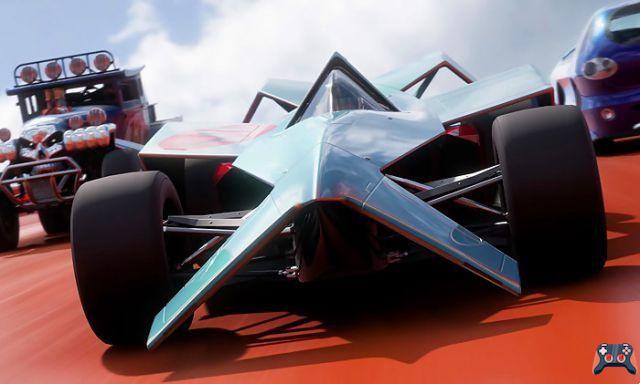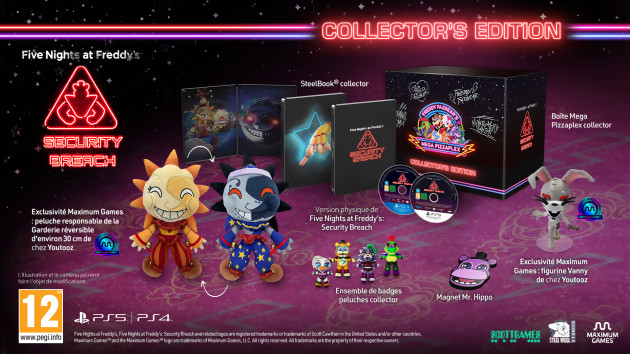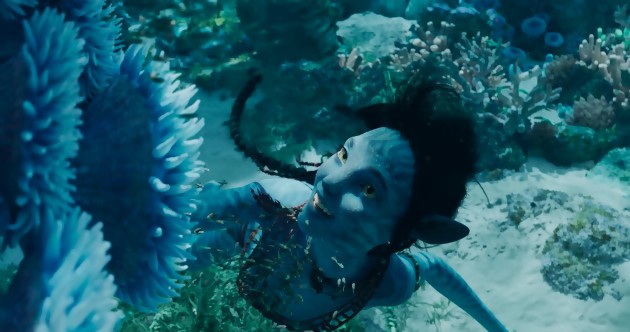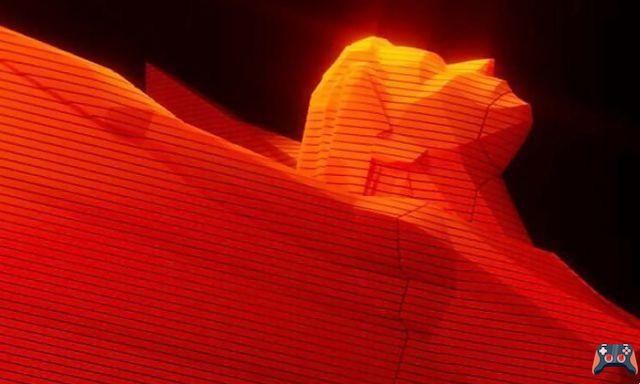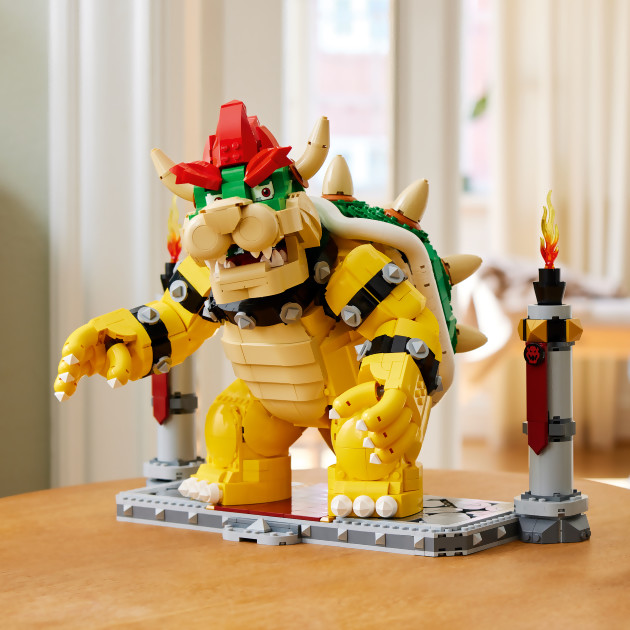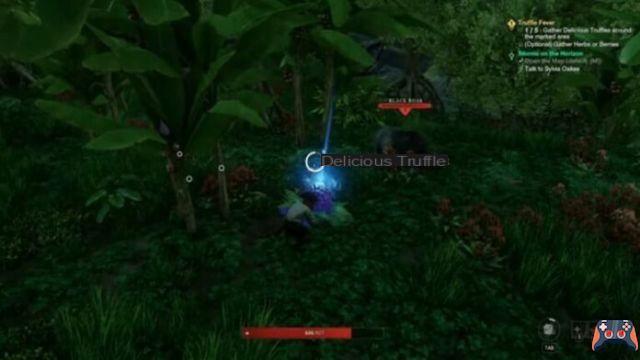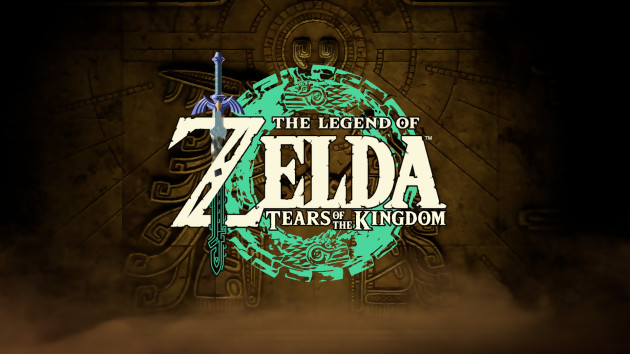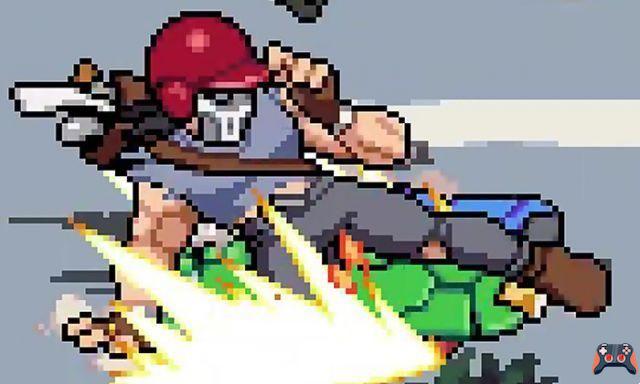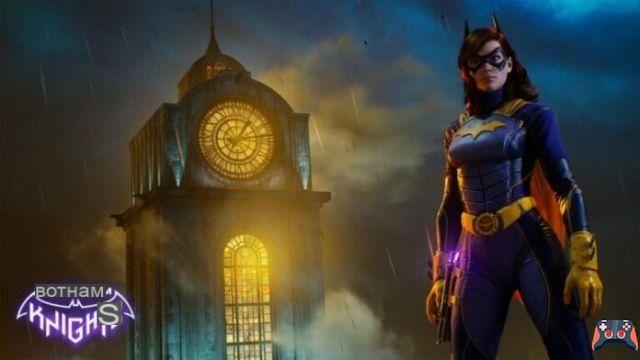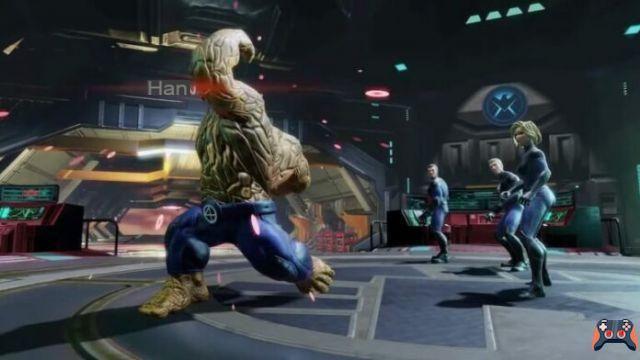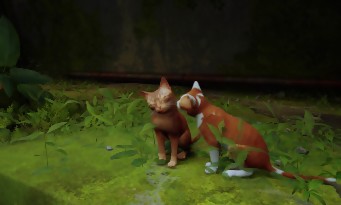 It all starts as a cute and bucolic epic, set in the middle of nature. A tribe of cats wakes up, we embody one of them, and our first steps in the adventure consist of lapping up a puddle of water, giving our fellow cats a few playful kicks, and giving them a few licks. So cute! Only then, one bad step later and our feline and orange hero falls into what seems to be a bottomless pit. He then wakes up prisoner of a walled and forgotten city. For the player, it's time to discover the real world of Stray, which no longer has much naturalness since it is both post-apocalyptic (humans disappeared a long time ago) and cyberpunk (humanoid robots called Companions replaced them). Plants, genetically modified to be able to grow under artificial lights, bring some nice touches of greenery, but the general atmosphere remains essentially urban. The total absence of sun imposes a permanent night, an artificial dome clumsily replaces the sky and the stars by a few specific lights, colored neon lights are reflected in the puddles of water, and the extremely vertical architecture evokes the most Asian cities populated by our present world. The result is absolutely magnificent, both technically (the game is extremely fluid with regard to what is displayed) and artistically. The streets are teeming with details, the colors are always chosen with care, the level design is clever because it's falsely cluttered, and the Companions equipped with cathodic heads have a crazy class. And our cat in all this? Well it is very nicely modeled, and above all perfectly animated! From the swaying gait to the hunched frightened back, you'd swear you were dealing with a real clerk. It must be said that the developers did not hesitate to integrate most of the typical behavior of house tigers into the game.
It all starts as a cute and bucolic epic, set in the middle of nature. A tribe of cats wakes up, we embody one of them, and our first steps in the adventure consist of lapping up a puddle of water, giving our fellow cats a few playful kicks, and giving them a few licks. So cute! Only then, one bad step later and our feline and orange hero falls into what seems to be a bottomless pit. He then wakes up prisoner of a walled and forgotten city. For the player, it's time to discover the real world of Stray, which no longer has much naturalness since it is both post-apocalyptic (humans disappeared a long time ago) and cyberpunk (humanoid robots called Companions replaced them). Plants, genetically modified to be able to grow under artificial lights, bring some nice touches of greenery, but the general atmosphere remains essentially urban. The total absence of sun imposes a permanent night, an artificial dome clumsily replaces the sky and the stars by a few specific lights, colored neon lights are reflected in the puddles of water, and the extremely vertical architecture evokes the most Asian cities populated by our present world. The result is absolutely magnificent, both technically (the game is extremely fluid with regard to what is displayed) and artistically. The streets are teeming with details, the colors are always chosen with care, the level design is clever because it's falsely cluttered, and the Companions equipped with cathodic heads have a crazy class. And our cat in all this? Well it is very nicely modeled, and above all perfectly animated! From the swaying gait to the hunched frightened back, you'd swear you were dealing with a real clerk. It must be said that the developers did not hesitate to integrate most of the typical behavior of house tigers into the game.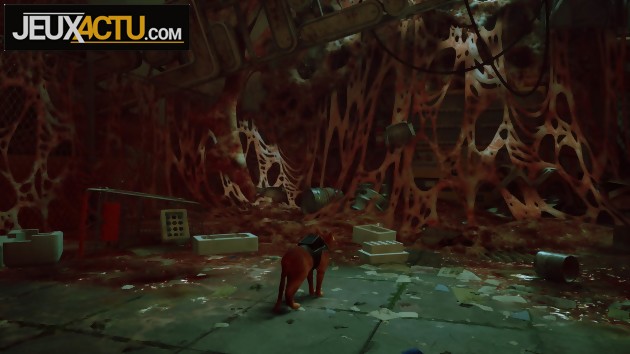
ARE WE PLAYING CAT?
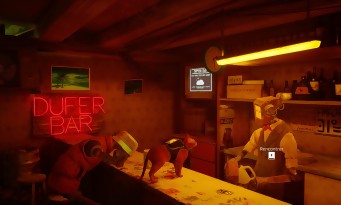 You can meow at will, drop objects, walk on a computer or piano keyboard, scratch sofas, ransack a game of dominoes, rub against the legs of certain robots (and then make a heart appear on their head-screen) and cause others to fall through their legs as they moved quietly. Even sleep, which remains the main activity of cats, has been integrated into the game. It is indeed possible to rest in different places, which could be described as meditation points. And it's not just a gimmick, since the field of the camera then slowly widens, giving us a better understanding of the local architecture, even some clues to solve the quests in progress. There are indeed several missions to complete during the adventure, the main one of course being to escape the city. But the game trusts the intelligence of the player and does not impose quest logs, NPC markers or GPS on them. There isn't even a map to get your teeth into, and that's good! Exploring the world and interacting with robots becomes more natural. Every moment you get lost is an opportunity gained to admire the scenery or discover new shortcuts. While some developers would certainly have used the pretext of the cat to serve us a sixth sense in a "detective vision", BlueTwelve Studio never betrays the name of the game and really lets us roam as we please. Playing a cat also offers an interesting point of view and quite new camera perspectives, especially during interactions with the Companions, which necessarily seem "giant".
You can meow at will, drop objects, walk on a computer or piano keyboard, scratch sofas, ransack a game of dominoes, rub against the legs of certain robots (and then make a heart appear on their head-screen) and cause others to fall through their legs as they moved quietly. Even sleep, which remains the main activity of cats, has been integrated into the game. It is indeed possible to rest in different places, which could be described as meditation points. And it's not just a gimmick, since the field of the camera then slowly widens, giving us a better understanding of the local architecture, even some clues to solve the quests in progress. There are indeed several missions to complete during the adventure, the main one of course being to escape the city. But the game trusts the intelligence of the player and does not impose quest logs, NPC markers or GPS on them. There isn't even a map to get your teeth into, and that's good! Exploring the world and interacting with robots becomes more natural. Every moment you get lost is an opportunity gained to admire the scenery or discover new shortcuts. While some developers would certainly have used the pretext of the cat to serve us a sixth sense in a "detective vision", BlueTwelve Studio never betrays the name of the game and really lets us roam as we please. Playing a cat also offers an interesting point of view and quite new camera perspectives, especially during interactions with the Companions, which necessarily seem "giant".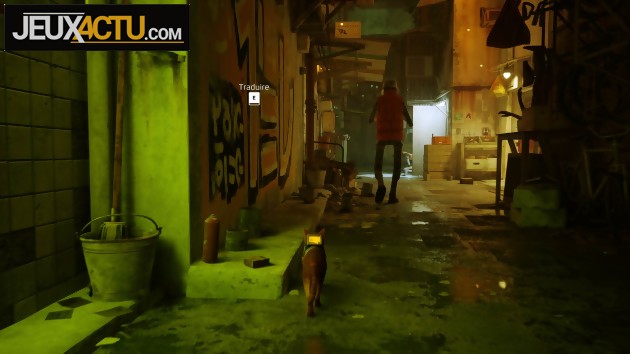
CAT PERCHED
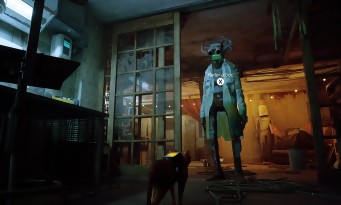 If a good part of the adventure naturally consists of exploring the world, in particular by jumping on the gutters, air conditioning extractions and other roof edges, Stray still offers several additional game mechanics. At the beginning of the adventure, we are thus led to solve some very simple puzzles, by transporting small objects between our teeth, or by walking inside empty cans in order to move them. We then say to ourselves that the game is likely to quickly turn in circles, but the Cyberpunk universe fortunately comes to the rescue of the gameplay. Futuristic technology allows some welcome fantasies, without the delirium ever being pushed too far, which could have quickly come into dissonance with the fact of playing a simple cat. A good balance has been found thanks to B-12, a very friendly drone that allows the tomcat to understand the dialogues of the robots, which translates certain inscriptions for him, and which, unlike our four-legged friend, can hack the door locks. or enter digicodes. There are even a few enemies to avoid first and then deal with later. Called Zurks, these funny critters are situated halfway between the tardigrades of our real world and the head crabs of Half-Life. On several occasions Stray has also reminded us of the best productions of Valve, Half-Life and Portal in mind, whether in the choice of colors or the general atmosphere. Suffice to say that we are particularly good at it, and that BlueTwelve Studio's first attempt turns into a real masterstroke.
If a good part of the adventure naturally consists of exploring the world, in particular by jumping on the gutters, air conditioning extractions and other roof edges, Stray still offers several additional game mechanics. At the beginning of the adventure, we are thus led to solve some very simple puzzles, by transporting small objects between our teeth, or by walking inside empty cans in order to move them. We then say to ourselves that the game is likely to quickly turn in circles, but the Cyberpunk universe fortunately comes to the rescue of the gameplay. Futuristic technology allows some welcome fantasies, without the delirium ever being pushed too far, which could have quickly come into dissonance with the fact of playing a simple cat. A good balance has been found thanks to B-12, a very friendly drone that allows the tomcat to understand the dialogues of the robots, which translates certain inscriptions for him, and which, unlike our four-legged friend, can hack the door locks. or enter digicodes. There are even a few enemies to avoid first and then deal with later. Called Zurks, these funny critters are situated halfway between the tardigrades of our real world and the head crabs of Half-Life. On several occasions Stray has also reminded us of the best productions of Valve, Half-Life and Portal in mind, whether in the choice of colors or the general atmosphere. Suffice to say that we are particularly good at it, and that BlueTwelve Studio's first attempt turns into a real masterstroke.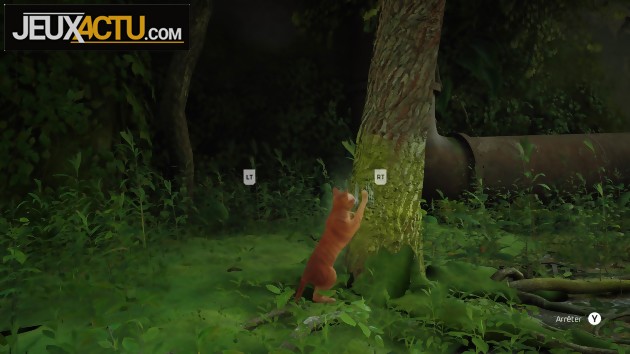
SMALL CLAWS IN THE CONTRACT
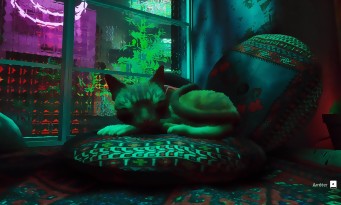 Does this mean that we have here the game of the century? Not far, not far… but not quite! We thus have two major reproaches to formulate with the adventure, history to justify the adage "who likes well punishes well". The first concerns the operation of the jumps, which do not leave us as much freedom as we would like since it is only possible to jump on the platforms that are provided for. These are extremely numerous, of course, but you still have to aim for them and wait for the display of an icon confirming that it is possible to access them. We would have preferred to be able to make vouchers at will, including in a "useless" way. The other concern comes from the progress of certain quests, which we carried out "in reverse". Some actions can thus be carried out without really knowing why (even though they make sense in the context of the mission which we learn about later), while it can happen to bring an object back to an NPC even before it didn't ask us. In addition, and in a much more anecdotal way, we have observed on rare occasions some problems with collisions or camera placement. The lifespan left us a bit unsatisfied, since it is possible to see the end of the adventure in less than five hours if we decide to ignore the robots' additional requests and only carry out the necessary, while six hours are enough to discover absolutely everything there is to do and see in the game. At least Stray thus avoids boring the players, who will ultimately keep excellent memories.
Does this mean that we have here the game of the century? Not far, not far… but not quite! We thus have two major reproaches to formulate with the adventure, history to justify the adage "who likes well punishes well". The first concerns the operation of the jumps, which do not leave us as much freedom as we would like since it is only possible to jump on the platforms that are provided for. These are extremely numerous, of course, but you still have to aim for them and wait for the display of an icon confirming that it is possible to access them. We would have preferred to be able to make vouchers at will, including in a "useless" way. The other concern comes from the progress of certain quests, which we carried out "in reverse". Some actions can thus be carried out without really knowing why (even though they make sense in the context of the mission which we learn about later), while it can happen to bring an object back to an NPC even before it didn't ask us. In addition, and in a much more anecdotal way, we have observed on rare occasions some problems with collisions or camera placement. The lifespan left us a bit unsatisfied, since it is possible to see the end of the adventure in less than five hours if we decide to ignore the robots' additional requests and only carry out the necessary, while six hours are enough to discover absolutely everything there is to do and see in the game. At least Stray thus avoids boring the players, who will ultimately keep excellent memories.







